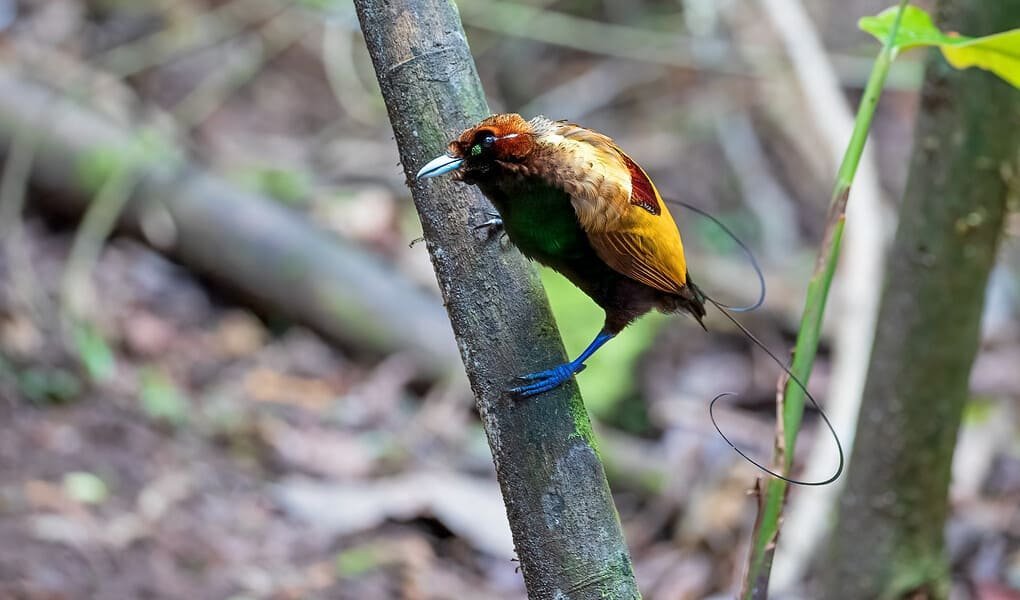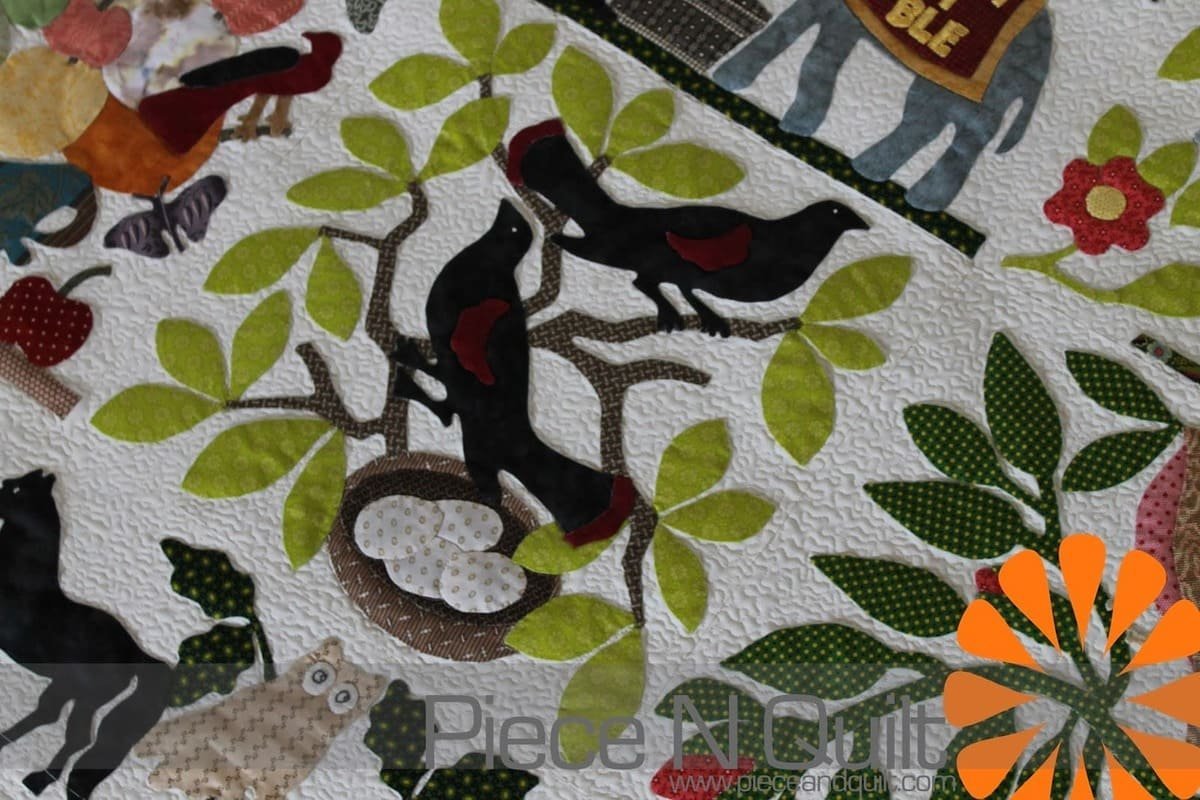The Diphyllodes magnificus, known as the magnificent bird of paradise, is one of the most impressive birds in the world, famous for its lush plumage and fascinating mating behaviors. Native to the tropical forests of New Guinea, this bird is a true spectacle of nature, attracting the attention of ornithologists and wildlife enthusiasts alike. In this article, we will explore its unique characteristics, habitat preferences, dietary habits, reproductive behaviors, and the conservation challenges this species faces.

Summary
Characteristics of Diphyllodes Magnificus
The Diphyllodes magnificus is an impressive example of avian diversity, exhibiting features that set it apart from other species. Here are some of its most notable aspects:
- Vibrant Plumage: Males possess stunning plumage, with colors ranging from deep green to iridescent blue and bright yellow. This color combination is one of the most striking among birds of paradise.
- Long, Ornate Tail: Males have long, impressive tails that can measure up to 50 centimeters. These feathers are used in mating displays, creating a breathtaking visual effect.
- Size and Weight: Males measure between 30 to 40 centimeters in length, while females are slightly smaller, ranging from 25 to 30 centimeters. Males weigh between 150 to 200 grams, while females weigh around 100 to 120 grams.
Habitat of Diphyllodes Magnificus
The natural habitat of the Diphyllodes magnificus primarily consists of tropical forests, which provide the necessary resources for its survival. Here are some key points about this species’ habitat preferences:

- Tropical Forest Ecosystems: This bird thrives in the dense tropical forests of New Guinea, where rich biodiversity provides an abundance of food and nesting opportunities.
- Altitude Range: The Diphyllodes magnificus is often found at altitudes ranging from 1,500 to 2,500 meters above sea level. They prefer areas with dense vegetation, which offers protection from predators and suitable foraging locations.
- Nesting Sites: The species builds its nests on low branches of tall trees, using leaves, twigs, and other natural materials to create a safe environment for its eggs and chicks.
Behavior and Reproduction
The mating behavior of the Diphyllodes magnificus is one of the most fascinating aspects of its life. Males perform elaborate displays to attract females, showcasing their stunning plumage and unique movements. Here are some highlights of their reproductive behavior:
- Mating Displays: Males gather in specific locations known as leks, where they perform dances and displays to impress females. These spectacles may include jumps, spins, and the display of tail feathers, creating a mesmerizing visual effect.
- Vocalizations: During mating, males emit a series of distinct calls and sounds that serve to attract females. These vocalizations are an essential part of their mating rituals, enhancing the impact of their displays.
- Female Choice: Females observe the performances of several males before selecting a mate. The quality and complexity of a male’s display play a significant role in female choice, with more impressive displays leading to greater reproductive success.
- Nesting Behavior: After mating, females construct nests in tree branches, typically laying one to two eggs. The female is solely responsible for incubating the eggs and caring for the chicks after hatching.
Diet of Diphyllodes Magnificus
The diet of the Diphyllodes magnificus consists primarily of fruits, nectar, and insects. Here are some key points about their feeding habits:
- Fruits: This bird enjoys a variety of fruits, especially berries and figs. Its strong beak allows it to access food high in the trees, which is essential for its survival.
- Nectar: The Diphyllodes magnificus also feeds on the nectar of various flowering plants. Its specialized beak enables it to extract nectar from deep flowers, playing a vital role in pollination.
- Insects: In addition to fruits and nectar, this bird consumes insects, especially during the breeding season when protein is crucial for egg production and chick rearing.
Conservation of Diphyllodes Magnificus
Despite its stunning beauty, the Diphyllodes magnificus faces several threats that jeopardize its survival. Here are some of the main conservation challenges:
- Habitat Loss: Deforestation and habitat degradation due to logging, agriculture, and urbanization are significant threats to the Diphyllodes magnificus. The destruction of its forest habitat leads to population declines and fragmentation.
- Illegal Hunting: The hunting of birds of paradise for their feathers and as exotic pets poses a considerable threat. Stricter regulations are needed to combat illegal hunting practices.
- Climate Change: Changes in climate patterns can impact the availability of food sources and suitable nesting sites for the Diphyllodes magnificus, further threatening its survival.
Conservation Efforts
To protect the Diphyllodes magnificus and its habitat, several conservation initiatives are underway. Here are some important actions being taken:
- Protected Areas: Establishing and maintaining protected areas and national parks in New Guinea is crucial for safeguarding the habitats of the Diphyllodes magnificus. These areas help ensure the preservation of biodiversity and provide safe environments for wildlife.
- Community Involvement: Engaging local communities in conservation initiatives is essential. By promoting sustainable practices and providing alternatives to deforestation and hunting, communities can help protect the bird’s habitat.
- Research and Monitoring: Ongoing research and monitoring of Diphyllodes magnificus populations are vital for understanding their ecology and behavior. This information can inform conservation strategies and help track the success of protection initiatives.
- Education and Awareness: Raising awareness about the importance of conserving the Diphyllodes magnificus and other birds of paradise can foster support for conservation initiatives. Educational programs can help local communities recognize the value of preserving their natural heritage.
Cultural Importance
The Diphyllodes magnificus holds cultural significance in the regions where it is found. Here are some aspects of its cultural relevance:
- Symbol of Beauty: Birds of paradise are often seen as symbols of beauty and grace in various cultures. Their stunning appearance has inspired art, folklore, and traditional practices among local communities.
- Traditional Use: In some indigenous cultures, the feathers of the Diphyllodes magnificus are used in ceremonial attire and headdresses. Sustainable management of these practices is crucial to avoid population declines.
- Ecotourism: The unique beauty of the Diphyllodes magnificus has made it a sought-after species for birdwatchers and ecotourists. Promoting ecotourism can generate economic benefits for local communities while encouraging habitat conservation.
Conclusion
The Diphyllodes magnificus is a fascinating bird of paradise that captivates all who encounter it. Its vibrant plumage, intricate mating displays, and unique behaviors make it a true spectacle of nature. However, the threats it faces due to habitat loss and illegal hunting highlight the urgent need for conservation efforts to protect this stunning species.
By raising awareness, promoting sustainable practices, and engaging local communities, we can work together to ensure the survival of the Diphyllodes magnificus and its habitat. The beauty of this remarkable bird serves as a reminder of the importance of preserving the biodiversity of our planet for future generations. Let us unite in our efforts to protect the enchanting Diphyllodes magnificus, ensuring that its vibrant colors and captivating behaviors continue to inspire admiration for many years to come.


